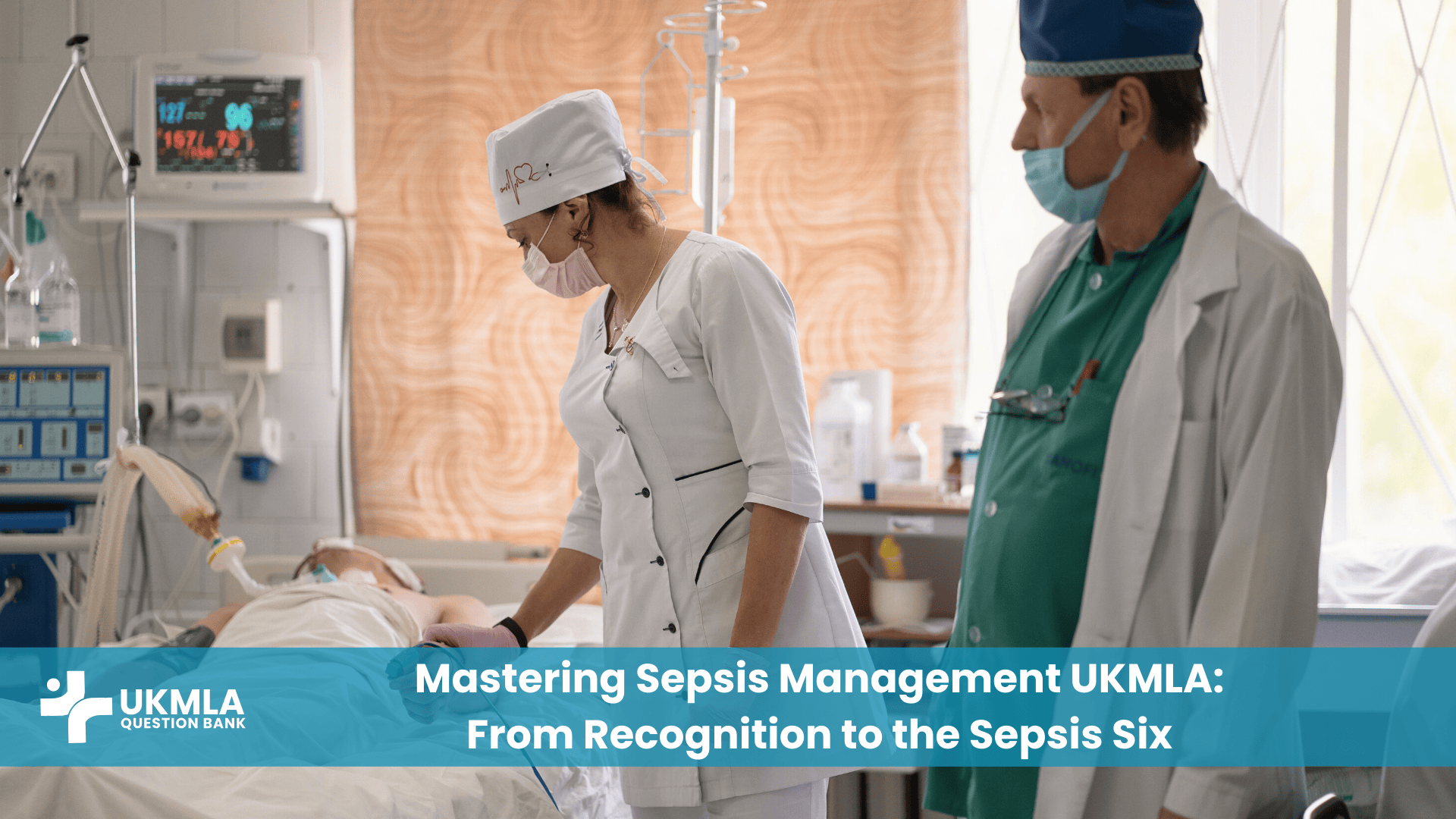You’ve made it through years of medical school, absorbing a mountain of clinical knowledge. Now, the UK Medical Licensing Assessment (UKMLA) stands between you and your foundation years. The Applied Knowledge Test (AKT) component, in particular, can feel like a formidable challenge. You know the knowledge is in there, but how do you effectively retrieve, apply, and refine it for exam day? The answer lies not just in using a question bank, but in having a robust strategy for it.
Many candidates find themselves staring at a question bank with thousands of questions, feeling a mix of determination and pure dread. The common mistake is to dive in headfirst, answering questions randomly, hoping that sheer volume will translate to success. I remember a student who completed over 6,000 questions but saw their scores plateau, leaving them frustrated and burnt out. Their error wasn’t a lack of effort but a lack of a systematic approach. They were treating the q-bank like a test instead of the powerful diagnostic and learning tool it is.
This guide is designed to prevent you from making that same mistake. We will break down how to transform your UKMLA AKT question bank from a daunting list of questions into a targeted, high-yield engine for your revision. Together, we’ll build a strategy that covers every phase of your preparation, ensuring every question you answer pushes you closer to a passing score.
Key Takeaways
- Strategy Over Volume: A systematic approach to your UKMLA AKT question bank is more effective than randomly answering thousands of questions.
- Phased Learning: Structure your q-bank use into distinct phases: foundational learning (tutor mode), consolidation (timed blocks), and pre-exam simulation (mock exams).
- Active Recall and Analysis: The real learning happens when you deeply analyse why an answer is correct and, more importantly, why the others are incorrect. This is non-negotiable.
- Integrate with Guidelines: Don’t let your q-bank exist in a vacuum. Actively connect questions and concepts back to the official GMC UKMLA Content Map and NICE guidelines to build authoritativeness in your knowledge base.
- Target Your Weaknesses: Use the performance data from your question bank to identify and ruthlessly target your weak areas, turning them into strengths before exam day.
Phase 1: Choosing Your Tools and Setting the Foundation
Before you answer a single question, the first strategic step is selecting the right resources and understanding the landscape. Not all question banks are created equal, and your primary goal here is to choose a high-quality tool that aligns with the UKMLA syllabus.
How to Select the Right UKMLA AKT Question Bank
Your question bank will be your primary revision partner, so it’s crucial to choose wisely. You are investing significant time and money, and the quality of the resource directly impacts your preparation. When evaluating options, you are looking for more than just a large number of questions.
Based on the standard approach in UK practice for medical education, here’s what you should look for:
- Alignment with the GMC UKMLA Content Map: This is the most critical factor. The question bank must be explicitly designed for the UKMLA, not just a rebranded PLAB or medical school finals resource. The explanations and topics should directly reference the domains and presentations outlined in The GMC UKMLA Content Map: Your Blueprint for Success.
- Detailed, High-Quality Explanations: A q-bank’s value is in its explanations. A good explanation not only clarifies the correct answer but also explains the pathophysiology, relevant investigations, management steps, and why the distractor options are incorrect.
- Advanced Performance Analytics: You need to track your progress effectively. Look for a platform that provides detailed analytics on your performance by specialty (e.g., Cardiology, Respiratory), topic, and question type. This data is essential for identifying weaknesses.
- Multiple Modes of Practice: A versatile question bank will offer different modes, such as ‘Tutor Mode’ (where you see the explanation immediately after each question) and ‘Timed Mode’ (which simulates exam conditions).
- Up-to-Date and Referenced Content: Medical guidelines change. Ensure the question bank is regularly updated and references key UK sources like NICE and the Resuscitation Council UK.
Key Point: Do not fall into the trap of using too many question banks. Choose one, or at most two, high-quality resources and master them. Spreading yourself too thin leads to superficial learning and fragmented knowledge.
The First Pass: Using ‘Tutor Mode’ for Foundational Learning
Your initial goal is not to test yourself but to learn. For the first pass through the question bank (or at least the first pass through each specialty), you must use it in an untimed ‘Tutor Mode’.
This approach involves doing small blocks of questions (10-20 at a time) and reading the explanation for every single question immediately after answering it, whether you got it right or wrong.
Why this works:
- For Correct Answers: It reinforces your knowledge and confirms your reasoning was sound. Sometimes you get a question right through luck; reading the explanation ensures you understand the core concept properly.
- For Incorrect Answers: This is where the most valuable learning occurs. You get immediate feedback on your knowledge gap. Don’t just read the explanation passively. Actively engage with it. Ask yourself:
- Why was my choice wrong? What was the flaw in my logic?
- What key piece of information did I miss in the question stem?
- Why is the correct option the most correct?
- What do I need to know about the other distractor options?
This active recall and analysis process is what builds strong, retrievable knowledge. It’s slow and deliberate, but it creates the foundation upon which all your subsequent, faster-paced revision will be built. Consider this an essential part of your journey to Mastering the UKMLA AKT: Proven Strategies for a High Score.
Phase 2: Consolidation and Performance Analysis
Once you have worked through a significant portion of the question bank in tutor mode (e.g., completed your first pass of all specialties), it’s time to shift gears. The goal of this second phase is to consolidate your knowledge, improve your timing, and begin analysing your performance in detail.
Shifting to Timed, Random Blocks
Now you will move away from tutor mode and start doing larger blocks of questions (40-50 at a time) in a timed, random mode. This serves two purposes:
- Simulating Exam Pressure: The AKT is a time-pressured exam. You need to get used to answering questions efficiently and making decisions quickly. Practising in timed blocks helps build this mental stamina.
- Encouraging Interleaving: By mixing questions from all specialties randomly, you are practising “interleaving.” This is a proven learning technique that forces your brain to switch between different topics, improving long-term retention far more effectively than studying one topic for a whole day (blocked practice).
After completing each timed block, your work is not done. You must dedicate as much time, if not more, to reviewing the entire block. Go through every question again, reading the explanations for both your correct and incorrect answers. This reinforces the knowledge and helps you spot patterns in your mistakes. Are you consistently misinterpreting blood gas results? Do you struggle with dermatology presentations? This is the data you need.
A Word from an Educator:
“Students often see a 75% score on a q-bank block and move on, satisfied. The expert learner, however, sees that 75% and obsesses over the 25% they got wrong. They dig into those incorrects, understand the ‘why’ behind their error, and turn that weakness into a future strength. That’s the difference between passing and excelling.”
The Art of the Review: Creating a Mistake Log
Passive review is not enough. You need an active system to learn from your errors. This is where a mistake log or error journal comes in. It can be a simple spreadsheet or a physical notebook. For every question you get wrong, or even questions you got right but were unsure about, log the following:
- Question ID: So you can find it again.
- Topic/Specialty: E.g., Cardiology, Atrial Fibrillation.
- Why You Got It Wrong: Be honest. Was it a knowledge gap? Did you misread the question? Did you fall for a plausible distractor?
- The Key Learning Point: A concise, one-sentence summary of the core concept you need to remember. For example: “In a young, otherwise healthy patient with new-onset AF, rate control with a beta-blocker is first-line.”
Reviewing this mistake log regularly is one of the highest-yield activities you can do. It’s a personalised textbook of your own weaknesses.
Key Point: Your percentage score on a question block is a vanity metric. The real value is in the learning opportunities presented by the questions you struggled with. Embrace your mistakes; they are your roadmap to improvement.
Phase 3: Pre-Exam Sharpening and Simulation
In the final 3-4 weeks before your UKMLA AKT, your focus should shift again. Now, it’s all about simulating the exam experience, targeting any remaining weaknesses with precision, and ensuring your knowledge is aligned with UK-specific guidelines.
The Role of Mock Exams
Most high-quality UKMLA question banks offer full-length mock exams. These are designed to replicate the structure, timing, and difficulty of the real AKT. You should plan to take at least two or three of these under strict exam conditions:
- Time yourself strictly. No extra breaks.
- No distractions. Turn off your phone and find a quiet place.
- Complete it in one sitting to build mental and physical endurance.
The score from a mock exam gives you a realistic benchmark of where you stand. But more importantly, the review process afterwards is your final, best chance to identify any remaining weak areas. After each mock, spend a full day analysing every single question. Your performance here will guide your final weeks of study.
Integrating Q-Bank Knowledge with Official Guidelines
Throughout your revision, but especially in this final phase, you must anchor your knowledge in official UK sources. This demonstrates authoritativeness and trustworthiness in your clinical reasoning.
When you review a question about managing Type 2 Diabetes, don’t just rely on the q-bank explanation. Take an extra five minutes to pull up the latest NICE guidelines on the topic. See how the recommended management pathway in the guideline matches the question’s explanation. This practice solidifies your understanding and prepares you for questions that might test nuances of UK-specific practice.
Phrases to keep in mind as you study:
- “Based on current UK guidelines…”
- “The standard approach in UK practice is…”
- “According to the Resuscitation Council UK, the first step is…”
This mindset is crucial. The UKMLA is designed to ensure you are ready for safe practice in the UK’s healthcare system, and that system is built on these foundational guidelines. This is a key part of tackling the different types of questions, including how to tackle Single Best Answer (SBA) questions effectively.
| Day | Morning Session (2 hours) | Afternoon Session (2-3 hours) | Evening |
|---|---|---|---|
| Monday | 1 block of 40 timed, random questions. | Deep review of the morning block. Update mistake log. | Quick review of mistake log (30 mins). |
| Tuesday | 1 block of 40 timed, random questions. | Deep review of the morning block. Update mistake log. | Read around a weak topic identified on Monday. |
| Wednesday | 1 block of 40 timed, random questions. | Deep review of the morning block. Update mistake log. | Quick review of mistake log (30 mins). |
| Thursday | 1 block of 40 timed, random questions. | Deep review of the morning block. Update mistake log. | Read around a weak topic identified on Wednesday. |
| Friday | 1 block of 40 timed, random questions. | Deep review of the morning block. Update mistake log. | Rest / Light Reading. |
| Saturday | Focus on weak areas: Do 50 questions (tutor mode) on your worst 2-3 topics. | Review Saturday’s questions. | Rest. |
| Sunday | Rest / Active Recovery | Review the entire week’s mistake log (1-2 hours). | Plan the week ahead. |
The GMC on Readiness for Safe Practice:
The MLA content map concentrates on the professional skills, knowledge and behaviours that are essential for safe practice – for example, effective communication, recognising risk and the diagnosis and management of common or acute presentations and conditions.
This quote from underscores that your preparation isn’t just about passing a test; it’s about proving you are ready to be a safe, effective doctor on day one of the Foundation Programme. Your question bank practice should always be viewed through this lens.
Frequently Asked Questions (FAQ) Your UKMLA AKT Question Bank Strategy Questions Answered
This varies depending on the phase of your revision. In the initial ‘tutor mode’ phase, quality trumps quantity; 40-50 well-reviewed questions might take a full day. In the consolidation phase, you might do 80-120 questions, split into timed blocks, with dedicated review time. Avoid burnout; consistency is key.
Start by working through each specialty to build a foundational knowledge base (e.g., a week on cardiology, a week on respiratory). Once you’ve covered all major topics once, switch primarily to random, timed blocks. This ‘interleaving’ is superior for long-term retention and simulates the exam.
While it’s natural to track your score, obsessing over it is counterproductive. Initially, scores might be in the 50-60% range, which is normal. As you learn, this should climb to 70-80% or higher. More important than the overall score is your trend of improvement and how you perform on mock exams closer to your test date.
If you finish the q-bank with time to spare, do not simply reset it and start again. First, focus on all your incorrect and marked questions. Go through them again in tutor mode. Then, use your performance analytics to create custom blocks from your weakest areas. Resetting should be a last resort, as you risk passively recognizing questions rather than actively problem-solving.
A good rule of thumb is to spend at least as long reviewing a block of questions as it took you to complete it. For a 1-hour timed block, dedicate at least 1-1.5 hours to a thorough review. This is the most high-yield part of the process.
Absolutely. This is an excellent active learning technique. When you encounter a difficult concept or a key fact in an explanation, create a digital (e.g., Anki) or physical flashcard. This helps transfer the knowledge from the q-bank into a spaced-repetition system for long-term memory.
While a question bank is central, it should not be your only resource. You should use it alongside a core textbook or video resource for deeper understanding and reference official guidelines (GMC, NICE) to ensure your knowledge is authoritative and aligned with UK practice.
The biggest mistake is passive learning: simply doing thousands of questions without deep review. This creates a false sense of security. The goal isn’t to see every question; it’s to learn from every question.
Ideally, you should integrate question bank practice early in your dedicated revision period. For most candidates, this is around 4-6 months before the exam. Starting early allows you to complete the different phases of the strategy without rushing.
They are a useful indicator but not a perfect prediction. Performance in a quiet room at home is different from the high-stakes exam environment. Use mock exam scores as a better benchmark, but always focus on the process of learning and improvement rather than fixating on the score itself.
Conclusion: From Passive Practice to Active Mastery
Your UKMLA AKT question bank is arguably the single most powerful tool in your revision arsenal, but only if you use it with a clear, phased strategy. By moving from foundational learning in tutor mode to performance consolidation with timed blocks, and finally to exam simulation with mocks, you create a comprehensive learning cycle.
Remember the key principles we’ve discussed: this is not a passive exercise. Each question is an opportunity for active learning. Dive deep into the explanations, be brutally honest about your mistakes, and use that data to guide your study. Anchor your knowledge in the bedrock of the GMC Content Map and NICE guidelines to ensure your understanding aligns with the expectations of UK practice.
A UKMLA question bank is an essential resource, but it’s the strategy you build around it that will unlock your potential, build your confidence, and ultimately lead you to success on exam day. You have the knowledge; now you have the plan. Go and execute it.
Primary Call to Action:
Ready to put this strategy into practice? Explore our adaptive UKMLA AKT Question Bank, fully aligned with the GMC Content Map and designed with these powerful learning principles in mind. Start your free trial today and turn your practice into progress.



